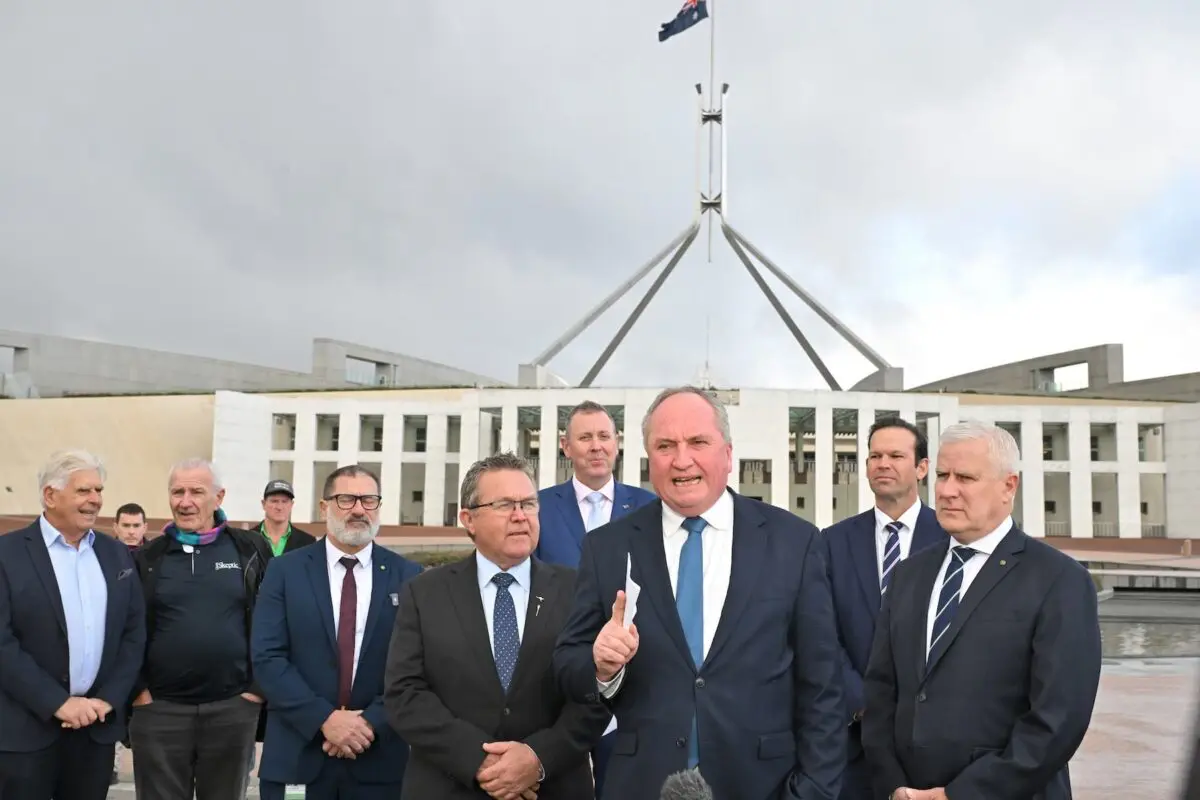By Giles Parkinson
Copyright reneweconomy

Federal climate and energy minister Chris Bowen was right about one thing: Not many people would be happy with the federal government’s newly announced 2035 emissions target. Some would think it too high and others too low.
In the end the federal government, on the advice of the Climate Change Authority, pitched a range – 62 per cent to 70 per cent below 2005 levels – that satisfied few, not the business lobbies obsessed by the costs of doing something, nor the environmentalists and others focused on the even greater risks of not doing enough.
The bottom line is that this is what collective failure looks like.
Don’t lay all the blame on the current government, or its advisors, or any individuals, this is the result of denial, delay, scare campaigns, misinformation and disinformation by the fossil fuel lobby and its enablers over decades, and the inability of nearly every government to put in place policies that could overcome that deliberate inertia.
As the Climate Change Authority underlines in its own report, the technologies exist to meet an economy-wide 62–70 per cent goal. This is well known. It’s just a crying shame – more than that really given the potential impacts on young and future generations – that they have not been deployed faster. Because they very easily could have.
And it’s frustrating to see how the CCA went out and explored a target of 65-75 per cent, and then had to reign it back in – hopefully not for political purposes.
Credit, though, where it’s due – Australia does now have what could be argued is a “respectable” target, which is more than it would have had with a conservative government, the architect of so much delay with its cancelling of the carbon price, its relentless attacks on renewables and EVs, and its continued questioning of the science and demonising of new tech.
The fact that we even have a number with a 7 in front of the target range can likely be credited to the efforts of Bowen, CCA chair Matt Kean and others who have been serious about the energy transition and the climate targets since taking on their roles.
But as Australia’s new teenage sprinting sensation Gout Gout might tell you – if you start too slow it’s really hard to catch up when the stakes are really high, and the competition is fierce.
And it’s no use arguing that Australia has more ambitious targets than other countries. Australia is – per capita – one of the most polluting countries in the world, even without counting the emissions of its fossil fuel exports, so it should have ambitious targets because it is also one of the wealthiest and most capable. Yet its industrial emissions have barely moved for at least 20 years, although the growth of wind and solar will hopefully soon change that.
The CCA notes that half of the emissions reductions over the coming decade will come directly from the electricity grid, where it is hoped that the rollout of large scale wind and solar finally accelerates, and a lot more indirectly through the decarbonisation of transport and buildings.
This requires a six-fold growth in utility storage from around 3.5 to 22 GW (which is looking very doable), a quadrupling wind capacity from around 13 to 56 GW (no wind farm has landed finance this year), tripling utility solar capacity from around 9.5 to 26 GW, and doubling rooftop and distributed solar capacity from around 23 to 48 GW by 2035.
At least the batteries and the rooftop solar will definitely happen, and the federal government has recognised the deficiencies of its own flagship policy by arming the Clean Energy Finance Corporation with another $2 billion to help more large scale wind and solar secure that elusive finance.
If you are wondering why this all sounds so defeatist, you can look at the scene – listen to last week’s Energy Insiders podcast with CSIRO climate scientist Pep Canadell, for instance, or study the climate impact report – and you can also wonder what might have been had we acted when we knew.
As recently as last year, Climateworks Centre analysed all the announced policies from federal and state governments and argued, if implemented, that would deliver an emissions cut of 66 per cent to 71 per cent by 2031.
What went wrong? Denial and delay. This is a time when governments should be accelerating targets and implementing more ambitious policies, not back-tracking. You might have heard a climate scientist or two say that in recent times.
Climateworks CEO Anna Skarbek says a target of 70 per cent should be beatable, and argues that the key is in the six net zero sector plans – electricity and energy, industry, resources, transport, built environment and agriculture and land – that will show how to get there.
“With the right policies, Climateworks Centre’s least-cost scenarios developed with CSIRO show that the nation can reach and exceed the new 2035 target,” she says.
“Every sector has the solutions and technologies ready and waiting to cut emissions, lower power bills and future-proof industries, jobs and ecosystems,” she said.
“The sector plans provide the enabling conditions for investors, business and communities to work together and achieve a healthier, safer future and economy.
“Now it’s about harnessing targets, plans, policies and the right kind of investment to reach that prosperous, future-proofed net zero destination. That’s what will deliver real benefits for Australians and the economy – a fact well known here and around the world.”
The most obvious omission of all is the technology that has been ignored or poo-pooed for decades, thanks to the interest of self interest groups more concerned about making money than making people safe.
This, of course, is in energy efficiency – a no brainer for cutting emissions and cutting costs, if only someone with ministerial powers had had the courage to push it.
The Energy Efficiency Council this week argued that energy efficiency and electrification could contribute around 20 percent of the emissions cuts needed for Australia to hit a 75 per cent reduction target by 2035.
Its CEO Luke Menzel welcomed news that AEMO will prepare a “Demand Side Statement of Opportunities” that will ensure – “at long last” – that Australia’s properly quantifies that opportunity.
The best we can hope for is that this target – despite Bowen’s unfortunate insistence that aiming higher is “not possible” – be considered a floor rather than a ceiling. Fortescue’s Andrew Forrest, the Smart Energy Council, and many others argue that it should be so.
“A cut of at least 75 per cent is what is needed for Australia to pursue emissions reductions in line with the science,” Forrest said. “This remains the only course that can avert the accelerating impacts of a world warmed beyond 1.5°C.”
Which means that floor must start at the top step, not the bottom one. Because failing to even reach a 62 per cent cut in emissions by 2035 – despite Australia’s wonderful resources in wind, solar, minerals and know-how – would be the most appalling abrogation of collective responsibility. And it will very much hurt us all.



